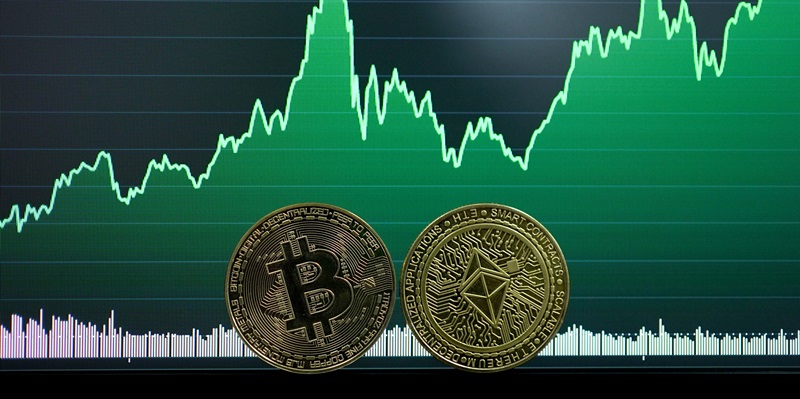On October 7, 2024, the cryptocurrency market displayed a curious divergence in the behavior of Bitcoin and Ethereum ETFs. Bitcoin ETFs saw significant inflows totaling an impressive $235.19 million, a clear indication of robust investor interest. Leading the way was Fidelity’s Wise Origin Bitcoin Fund (FBTC) with an inflow of $103.68 million, followed closely by BlackRock’s iShares Bitcoin Trust (IBIT), which drew $97.88 million. Other Bitcoin ETFs, including Bitwise’s BITB and ARK 21Shares ARKB, also experienced positive inflows, revealing widespread investor confidence in Bitcoin-based funds.
Bitcoin ETFs: A Haven for Risk-Averse Investors
Bitcoin’s surge in investor interest was unmistakable, driven by its reputation as a reliable store of value and a hedge against inflation. Investors flocked to Bitcoin ETFs such as Fidelity’s Wise Origin Bitcoin Fund and BlackRock’s iShares Bitcoin Trust, demonstrating a strong preference for Bitcoin as a ‘risk-off’ asset. The significant inflows on October 7 underscored Bitcoin’s perceived stability in a volatile economic landscape, making it an attractive alternative to traditional assets like gold.
Fidelity’s Wise Origin Bitcoin Fund emerged as a major player, securing $103.68 million in inflows, reflecting substantial confidence from institutional investors. BlackRock’s iShares Bitcoin Trust followed closely with $97.88 million, signaling an equally strong interest. These figures indicate a pronounced shift towards Bitcoin ETFs as a safer bet during times of economic uncertainty. Furthermore, the inflows into other Bitcoin ETFs like Bitwise’s BITB and ARK 21Shares ARKB corroborate this trend, emphasizing the collective investor sentiment favoring Bitcoin.
The allure of Bitcoin as a hedge against inflation cannot be overstated. In an era where economic uncertainties are prevalent, Bitcoin’s limited supply and decentralized nature make it a compelling choice for investors seeking stability. The significant inflows into Bitcoin ETFs reflect this sentiment, positioning Bitcoin as a preferable option for those wary of market volatility. Overall, the robust performance of Bitcoin ETFs on October 7 signifies a growing investor inclination towards assets that offer a semblance of safety amid economic turbulence.
Ethereum ETFs: Stability Amidst Caution
In stark contrast to Bitcoin’s performance, Ethereum ETFs exhibited no new inflows or outflows on the same day, indicating a notably cautious investor sentiment. This neutrality, occurring for only the second time in market history, highlights Ethereum’s complex position in the investment landscape. Despite a modest trading volume of $118.43 million, Ethereum ETFs maintained a stable footing, neither attracting nor losing investor capital.
The lack of movement in Ethereum ETFs raises questions about their market attractiveness and strategic timing. This stagnation could be attributed to Ethereum’s classification as a ‘risk-on’ asset, often compared to US stocks. While Ethereum holds tremendous potential as a long-term investment in blockchain technology and decentralized applications, the current market environment appears less favorable. Investors may be adopting a wait-and-see approach, wary of the volatility that often accompanies technological assets.
Ethereum’s perceived volatility compared to Bitcoin might explain the cautious attitude of investors. As an asset linked closely to the development and adoption of blockchain technology, Ethereum is seen as a high-risk, high-reward investment. While its technological promise is undeniable, the broader economic uncertainties and market conditions may be tempering investor enthusiasm. Consequently, Ethereum ETFs have remained stable but inactive, reflecting a measured approach by investors wary of short-term market fluctuations.
The neutral stance towards Ethereum ETFs on October 7 underscores the distinct investment philosophies shaping the cryptocurrency market. Whereas Bitcoin draws investors seeking stability and inflation hedging, Ethereum appeals to those with a longer-term perspective on technological growth. This dichotomy highlights the nuanced dynamics at play, with investors carefully weighing the risks and rewards associated with each asset. The contrast between Bitcoin and Ethereum ETFs provides valuable insights into the evolving strategies of cryptocurrency investors.
Insightful Divergence: Market Dynamics and Investor Behavior
The divergent performances of Bitcoin and Ethereum ETFs on October 7 offer a revealing glance into the current state of cryptocurrency investment. Bitcoin’s positioning as a ‘risk-off’ asset akin to gold has propelled it to the forefront of investor preferences, particularly in uncertain economic times. The substantial inflows into Bitcoin ETFs underline its status as a stable and reliable asset, appealing to those looking to hedge against inflation and market volatility.
Conversely, Ethereum’s perceived volatility and classification as a ‘risk-on’ asset have led to a more cautious investor approach. While Ethereum holds significant promise as a long-term technological investment, its attractiveness appears tempered by broader market uncertainties. The neutrality in Ethereum ETF movements suggests that investors are biding their time, waiting for more favorable conditions before committing capital to Ethereum-based funds.
The overarching trend thus reveals a nuanced bifurcation in investor strategy. For risk-averse investors, Bitcoin ETFs represent a secure and inflation-resistant option, driving their growing preference. In contrast, Ethereum ETFs, despite their potential for substantial technological advancements, are encountering cautious investor behavior due to market volatilities and economic uncertainties.
Evolving Cryptocurrency Investment Landscape
On October 7, 2024, the cryptocurrency market exhibited an interesting contrast in the activity of Bitcoin and Ethereum ETFs. Bitcoin ETFs saw substantial inflows, amounting to a notable $235.19 million, highlighting strong investor interest. Leading this surge was Fidelity’s Wise Origin Bitcoin Fund (FBTC), which received $103.68 million in inflows. Trailing not too far behind was BlackRock’s iShares Bitcoin Trust (IBIT), attracting $97.88 million. Other Bitcoin ETFs like Bitwise’s BITB and ARK 21Shares ARKB also enjoyed positive inflows, indicating broad investor confidence in Bitcoin-based funds.
While Bitcoin ETFs were thriving, Ethereum ETFs didn’t experience the same level of enthusiasm. This divergence suggests that while Bitcoin continues to be a favored choice among investors, Ethereum still faces hurdles in gaining similar traction. Despite the mixed performance of these ETFs, one thing is clear: the cryptocurrency market remains a dynamic and evolving space, drawing significant attention and investment. Such trends underscore the continuing volatility and opportunity within the crypto investment landscape.

